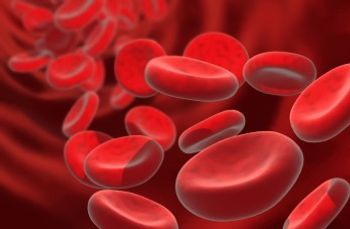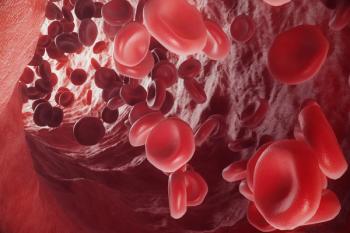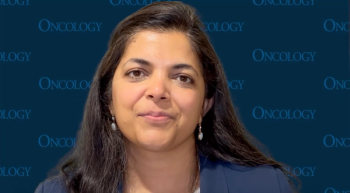
- ONCOLOGY Vol 15 No 5
- Volume 15
- Issue 5
Incidence and Management of AIDS-Related Lymphoma
The article by Drs. Levine, Seneviratne, and Tulpule is an excellent review of the available literature on the incidence and treatment of lymphoma related to the acquired immunodeficiency syndrome (AIDS).
The article by Drs. Levine, Seneviratne, and Tulpule is anexcellent review of the available literature on the incidence and treatment oflymphoma related to the acquired immunodeficiency syndrome (AIDS).
In 1987, the Centers for Disease Control broadened its casedefinition of AIDS to include human immunodeficiency virus (HIV)-seropositiveindividuals with intermediate- or high-grade non-Hodgkin’s lymphoma of B-cellor indeterminate phenotype (even in the absence of opportunistic infections orKaposi’s sarcoma). It is now appreciated that such tumors are the second mostcommon malignancy in persons with AIDS. Advanced extranodal disease also occursmore commonly in the AIDS population, and median survival times tend to beshort. These diseases can be classified as systemic and primary central nervoussystem (CNS) lymphomas.
Epidemiology and Incidence
The emergence of non-Hodgkin’s lymphoma as a malignancycharacteristic of AIDS is not surprising since its association with variouscongenital and acquired immunodeficiency states has been documented for morethan a decade. The risk of developing non-Hodgkin’s lymphoma in the setting ofHIV infection is approximately 100 times greater than that observed in thegeneral population. The majority of AIDS-associated non-Hodgkin’s lymphomaoccurs in adult men. However, unlike Kaposi’s sarcoma, which has asignificantly higher incidence among homosexual men, non-Hodgkin’s lymphomaoccurs in all AIDS risk groups.
The clinical and pathologic spectrum of the disease also appearssimilar among the various HIV-transmission categories. This finding suggeststhat environmental cofactors are probably less important in the etiology ofnon-Hodgkin’s lymphoma. The risk of developing non-Hodgkin’s lymphomaincreases with longer duration of immunodeficiency and lower CD4 cell counts.
The authors have provided a comprehensive review of the variousstudies conducted to determine the impact of highly active antiretroviraltherapy (HAART) on the incidence of lymphoma. The reported results areinconsistent for both systemic and primary CNS lymphomas. It is clear, however,that the decline in the incidence of lymphoma is not as impressive as thedecline in the incidence of Kaposi’s sarcoma. More time and studies are neededto ascertain the full impact of HAART on the incidence of non-Hodgkin’slymphoma in AIDS patients.
Treatment
There is little to add to Dr. Levine and colleagues’ detailedsummary of the trials evaluating chemotherapeutic approaches to the managementof AIDS-related non-Hodgkin’s lymphoma. I will take the opportunity, however,to highlight avenues worthy of further investigation. The presence of anunderlying immunodeficiency necessitates a unique approach to treatmentonethat is not immunosuppressive or myelosuppressive, and can be used alone or asan adjunct to cytotoxic therapy.
Monoclonal Antibodies
Rituximab (Rituxan)an anti-CD20 antibodyhas shown activityin low-grade and some refractory aggressive non-Hodgkin’s lymphomas inpatients without HIV infection. However, its efficacy in HIV-associatednon-Hodgkin’s lymphoma remains to be determined. More than 90% ofHIV-associated non-Hodgkin’s lymphoma patients are anti-CD20 positive; hence,it is an appropriate treatment modality to evaluate in this population.
The AIDS Malignancy Consortium, is currently evaluating theadjunctive use of rituximab with standard-dose CHOP chemotherapy(cyclophosphamide, doxorubicin HCl, vincristine [Oncovin], prednisone).Radioimmunotherapy with iodine-131 anti-CD20 and anti-CD22 monoclonal antibodiesare also potential treatment modalities.
Cytokines
In addition to mechanisms that directly stimulate B-cellexpansion, suppression of helper T-cell antiviral or cytotoxic surveillanceactivities can permit the establishment of opportunistic infections as well asmalignant clones. Interleukin (IL)-10 is a T-cell suppressor that has beenimplicated in the development of AIDS-related non-Hodgkin’s lymphoma. Thegradual decline of the type 1 cytokine profile (ie, associated with IL-2 andgamma-interferon) has been attributed to the impaired production of IL-2 andgamma-interferon by HIV-infected CD4 cells and impaired IL-2 production bymonocytes.
Exogenous subcutaneous administration of low-dose IL-2potentially improves the type 1 cytokine deficiency in vivo, and restores somedegree of immune competence, which may, in turn, impede the increased incidenceof opportunistic infections and virally associated malignancies in thesepatients.[1,2] The activity of this well-tolerated outpatient treatment inpreventing opportunistic infections or malignant disease progression in patientswith low or clinically undetectable tumor burden is currently being studied inphase II trials.
Conclusions
Median survival times for these patients range from 4 to 18months in various studies. Subgroups of patients with better immune function(CD4 cell count > 100/mm3) and a superior performance status have highersurvival rates. Standard-dose treatment with growth factor support may beappropriate for these patients. Low-dose treatment may be selected for patientswho are more severely immunocompromised, have a history of opportunisticinfections, or have a marginal performance status. Therapy should probably notbe administered to individuals who are extremely ill.
HAART has changed the prognosis of HIV disease, and has beenassociated with an increase in CD4 cell counts, a decrease in opportunisticinfections, and a significant prolongation in survival. Several trials haveconfirmed that combination therapy can be administered safely with HAART.Therefore, HAART should be incorporated into the treatment regimen ofAIDS-related non-Hodgkin’s lymphoma. Moreover, patients should be encouragedto participate in clinical trials that will engender the development of moreeffective treatment strategies in the future.
References:
1. Khatri VP, Fehinger TA, Baiocchi RA, et al: Ultra low-doseinterleukin-2 therapy promotes a type 1 cytokine profile in vivo in patientswith AIDS and AIDS-associated malignancies. J Clin Invest 6:1373-1378, 1998.
2. Bernstein ZP, Porter MM, Gould M, et al: Prolongedadministration of low-dose interleukin-2 in human immunodeficiencyvirus-associated malignancy results in selective expansion of innate immuneeffectors without significant clinical toxicity. Blood 86:3287-3294, 1995.
Articles in this issue
over 24 years ago
Current Therapy in Cancer, Second Editionover 24 years ago
Health-Related Quality of Life in Cancer Clinical Trialsover 24 years ago
Paroxetine Reduces Distress Associated With Cancer Treatmentover 24 years ago
Another Attempt to Rein in Medicareover 24 years ago
Tamoxifen for Breast Cancer Prevention Has No Heart-Related Effectsover 24 years ago
Smoking Cessation Legislationover 24 years ago
Comprehensive Breast Cancer WebsiteNewsletter
Stay up to date on recent advances in the multidisciplinary approach to cancer.

















































































